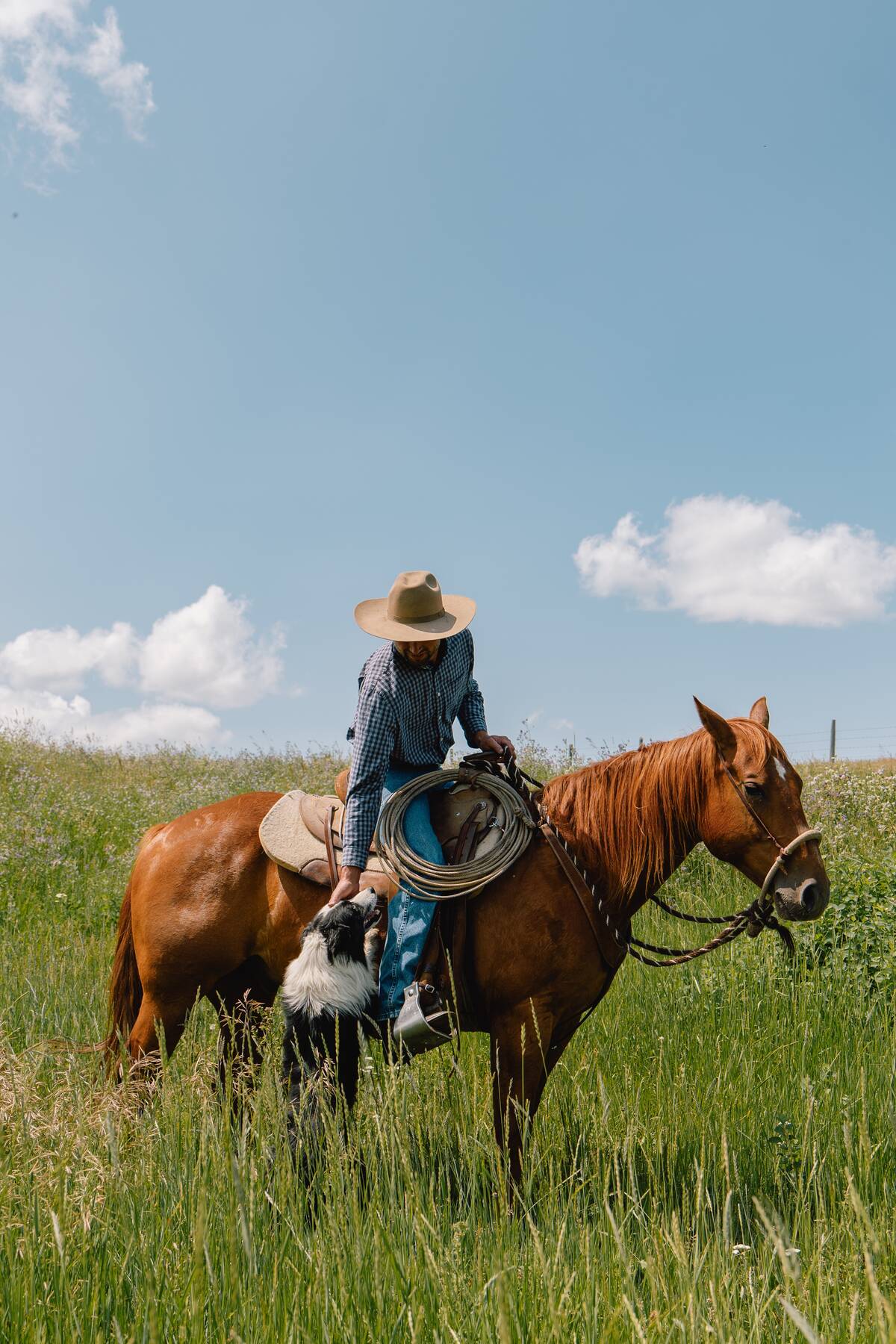Roper Roy arrived in our practice area last spring. He followed a young lady home from a horse training school in west Texas. Now married, it looked like Roper fell into a sizeable chunk of a prosperous ranching and farming operation.
He came to town for supplies for their branding next weekend. While he waited, I asked, “How did you get the name Roper?” Unoffended, he explained his mother picked it from a rodeo contestant list. He liked it and it stuck.
Roper said they needed 200 doses of seven-way clostridial vaccine, 200 doses of mixed viral vaccine for respiratory disease, enough meloxicam to cover the works and needles. He wanted to know if the half bottle of clostridial vaccine, the one on the dash left over from last year, could still be used. He also wanted to know the best way to clean syringes following branding.
Read Also

Regenerative ranching sees Alberta family through three decades of ups and downs
Alberta ranchers have found regenerative ranching key to surviving ups and downs of the business
I invited Roper in for coffee and started to pack the vaccines in a Styrofoam-lined cardboard box with ice packs, which prompted the question, “Why you doin’ that?”
“Keeping vaccine cold is very important, especially the viral vaccines. You take these home, put the vaccine in the fridge and refreeze the ice packs and keep everything cold until you are ready to use it. The bottle on the dash of your truck is no good. You can leave it here and I’ll look after it.”
I included a list of vaccine tips we sent out every year with vaccine purchases, the basic dos and don’ts from a variety of vaccine manufacturers. The list, accumulated over the years, grew as vaccines changed. Annual review helped keep all clinic staff up to date. Following are the points from that list.
Discuss vaccination protocols with your veterinarian yearly. Technology changes, vaccines change and disease patterns change.
It’s important to evaluate the cattle before deciding to administer vaccines. Wet hides and inclement weather can result in injection site reactions. Non-steroidal anti-inflammatory drugs, such as meloxicam, are routinely administered at vaccination to reduce the stress associated with other procedures such as branding, dehorning and castration.
Store, mix and handle vaccines according to label directions. Store vaccines somewhere dark and at 35 F to 45 F (1.7 C to 7.2 C). Don’t mix two different products in the same syringe unless it’s part of the package. Mark syringes if more than one vaccine is being used.
Reconstitute modified-live virus (MLV) vaccines with clean transfer needles. Use only new needles to fill and refill syringes. Ideally, a new needle should be used for each calf. Though individual needles are not practical, change needles at least every six calves. Never use barbed or bent needles.
Choose the appropriate needle size. Product efficacy and tissue reactions result from product entering the wrong tissue plane due to incorrect needle gauge and length. Sixteen-gauge, 5/8-inch needles work best for subcutaneous injections in spring calves.
Improper administration of animal health products potentially affects meat quality and creates an undesirable eating experience for consumers. Do it right. When possible, administer products subcutaneously in front of the shoulder within the triangular zone along the neck. Tenting the skin for subcutaneous injections allows for proper product placement. Select vaccines that meet beef quality assurance standards for low dose and subcutaneous injection to minimize the risk of long-term tissue damage.
If in doubt, ask your veterinarian. Intramuscular products frequently cause tissue damage. A Colorado University research study showed that more than 90 per cent of intramuscular reactions produced at branding could be detected at processing.
Adhere to product withdrawal times. Read labels.
Maintain and clean equipment properly. When cleaning syringes don’t use alcohol, disinfectants or detergents inside syringes, especially ones used for MLV vaccines. Instead, use hot water (distilled), more hot water as a rinse, dry on clean paper towels, use silicone oil for the plunger and store in a clean, dry area (plastic bags work well for storage). Break the syringe down to perform the cleaning procedure. Wash hands thoroughly.

















